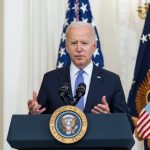Former President Donald Trump celebrated a night of triumph on Wednesday after his endorsements swept the primaries in Kansas, Missouri, Michigan, and Washington state. He took to Truth Social to declare his success, boasting about his perfect 24-for-24 record with candidates, many of whom were considered long shots. Although he throws around the term “victory clap,” these celebrations come with a notable asterisk—many of these races had him doubling down on candidates which effectively acts like a hedged bet.
This all-in strategy allows Trump to strut around calling it a win without the embarrassment of more traditional political losses. After all, when you slap your name on multiple candidates, how can one truly lose? It’s reminiscent of a kid in a candy store who, instead of choosing one favorite, decides to grab a bagful and declare every piece a personal victory. While this technique isn’t new for Trump, he’s certainly ramped it up this election cycle, adding even more candidates to his growing endorsement roster.
Trump endorsement record notches more primary wins, with a catch???
“A BIG NIGHT IN AMERICA. I was 24 for 24 in Endorsements, with numerous candidates that won being long shots,” he posted on Truth Social. “Very happy! Congratulations to All, do a great job for America!”…— @ZZEDITOR I FOLLOW (IFBAP) ALL 'MAGA' PATRIOTS (@ZZEDITOR) August 7, 2024
In Missouri’s Senate race, Trump showcased this technique by endorsing both Eric Greitens and Eric Schmitt. Schmitt emerged victorious in both the primary and the general election, solidifying his status as an ally on Capitol Hill. Meanwhile, the former president tried the same ruse in Arizona’s House primary, backing both Blake Masters and Abe Hamadeh. Though Hamadeh won, his success came with less than a ringing endorsement—barely scraping through with 30% of the vote.
Trump’s gubernatorial endorsements in Missouri were another example of his unique brand of campaigning. He endorsed all three main candidates: Lt. Gov. Mike Kehoe, Secretary of State Jay Ashcroft, and state Sen. Bill Eigel. With a “choose any one of them” mindset, he must have thought that picking multiple favorites would yield a guaranteed victory. Unsurprisingly, Kehoe took home the biggest slice of the pie, but one has to wonder what this says about Trump’s perceived need to back three horses in the same race.
In a similarly chaotic move, Trump endorsed both Andrew Bailey and Will Scharf for Missouri’s attorney general race. Surprise, surprise! The incumbent, Bailey, won with a comfortable 63%. However, there hangs a veil of curiosity: would the odds have been greater for Trump had he simply backed one candidate instead of needing to co-sponsor a race? Meanwhile, out in the Pacific Northwest, Trump endorsed a NASCAR driver, Jerrod Sessler, as part of his effort to oust Rep. Dan Newhouse. Results were still too close to call, highlighting the unpredictable nature of these all-in endorsements.
Despite claiming success in many races, his list of candidates fails to be devoid of defeats. The primaries in states like Utah and South Carolina showed that even Trump’s influence has its significant limitations. His endorsement of Trent Staggs flopped against Rep. John Curtis. Similarly, other Trump-backed contenders failed to secure wins in their respective races. So while the former president may revel in his “unique” approach to endorsing candidates left and right, the reality remains that no favorite can win every time.




